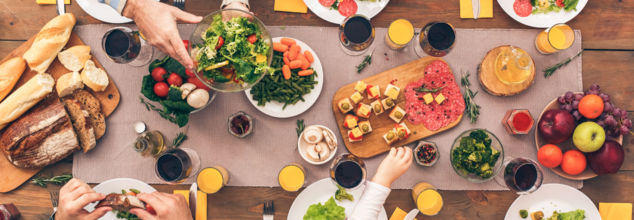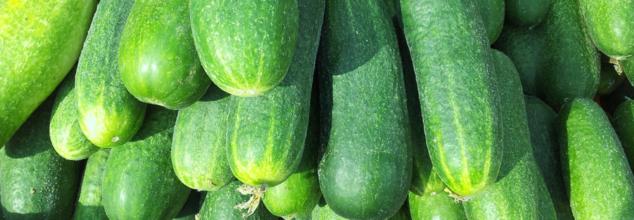- Health Conditions A-Z
- Health & Wellness
- Nutrition
- Fitness
- Health News
- Ayurveda
- Videos
- Medicine A-Z
- Parenting
- Web Stories
This Is How Fiber Intake Protects Your Gut Health

(Credit-Canva)
When you are eating food, you must always make sure that everything you eat is washed well and has been cooked properly as that is the only way you can prevent your body from getting sick. But there is always the .01 chance of that bacteria entering your body, while usually we don’t have much to worry about because we have our own defense mechanism in place, if the bacteria is particularly harmful, it could cause you issues to your digestive system. Recently there has been a lot of buzz around the E.coli. bacterium and people have been extra cautious about what they are eating. But is there some other way we can protect our gut health and digestive system. New research strongly suggests that eating more fiber can really help your gut stay healthy. The journal Nature Microbiology looked at the gut bacteria of over 12,000 people from many different countries. The results showed a clear link between how much fiber people ate and the types of bacteria living in their guts. This is important because having the right balance of gut bacteria is linked to overall health and well-being. This research reinforces the idea that what we eat has a direct impact on our gut health.
How Does Faecalibacterium Help Our Gut?
The study found that people who had more of a good type of gut bacteria called Faecalibacterium also had less of the bad bacteria, like E. coli. A scientist named Alexandre Almeida explained that our gut has its own way of keeping bad bacteria in check, and eating fiber seems to help this process. Faecalibacterium loves to eat fiber-rich foods like veggies, beans, and whole grains. When it eats fiber, it makes special substances called short-chain fatty acids, which are great for gut health. Having lower levels of Faecalibacterium has been linked to gut problems like inflammatory bowel disease (IBD).
Benefits Beyond Gut Health
While the study doesn't completely prove that eating more fiber directly gets rid of bad bacteria, it does add to the evidence of how good fiber is for our health in general. Dr. Experts pointed out that there's strong proof that fiber helps with things like diabetes, keeping a healthy weight, and keeping your heart healthy. He recommends that adults should aim to eat about 30 grams of fiber every day, but most Americans only eat a little more than half of that. Getting enough fiber is important for more than just your gut.
Simple Ways to Increase Fiber Intake
The study also gave some easy ideas for swapping foods to get more fiber: Instead of regular oat cereal, try bran cereal for breakfast; it has much more fiber. Instead of asparagus, try lima beans; they are packed with fiber. For a snack, choose pumpkin seeds over hazelnuts for a fiber boost. And for fruit, raspberries have way more fiber than blueberries. Making these simple changes can significantly increase your daily fiber intake and improve your gut health.
Beat The Heat With ORS: How To Know Which One Is Real?

For many things that come in colorful packaging, ORS or the World Health Organization (WHO) recommended Oral Rehydration Salt is one of them. While colorful packaging may seem interesting and often enticing, they may be harmful for you, as these may not be original ORS and could do you more harm than to benefit you.
What Is ORS?
It is an adequate glucose-electrolyte solution called the Oral Rehydration Salts (ORS) solution. It was first used in 1969, and then a new solution has been recommended by the WHO and the UNICEF since 2003. This use of ORS formulation, as WHO mentions has improved effectiveness from as compared to the old solution.
How To Identify The Original ORS?
There are 3 easy steps to identify the original ORS.

1. Look For The WHO Mark
The original ORS packaging will always have "WHO Recommended Formula" written on it. This is because the ORS contains a specific formula which is based on the WHO formulation. Avoid ORS which has any other mark on it.
2. Check For The Right Solution
Original ORS will contain glucose, potassium, and sodium. It has a specific ratio too, and contains sodium, potassium, chloride, citrate, and dextrose. This specific solution helps body with dehydration to enhance sodium absorption.
Whereas in fake ORS, the sugar content is higher than usual, while the sodium content is lower. This can worsen dehydration and cause an imbalance. This could also lead to brain swelling, and further worse diarrhea.
3. Read The Label Carefully
While original ORS will have "WHO Recommended Formula" written on it, fake ORS may contain "FSSAI" mark. While the FSSAI mark or the logo signifies that the product has been certified by the Food Safety and Standards Authority of India, which ensures that the food product meets the safety standard set by FSSAI. It categorizes the product under "food". Whereas, ORS is a medication.
If your ORS is marked with "FSSAI" stamp, it means that it is not recommended by WHO. Often, such ORS packaging also mentions that it is "Ready to Serve Fruit Beverage", or something like this: "This is only a trademark and does not represent its true nature. Not a WHO Oral Rehydration Salts."
Do make sure that you read the labels carefully.
Why Is It Important?
As India is under intense heatwaves, dehydration is one of the most common health impacts that many are facing. As a result, many are also witnessing loss of excessive water, electrolytes, and diarrhea. For such conditions, ORS becomes the go-to solution.
In India, diarrhea is the third-leading cause of child mortality. To prevent that, it is important that one must observe the steps to ensure that original ORS is being used.
Another step that people must avoid is making homemade ORS. This can further disrupt the balance, and could lead to severe health risks, and worsens health conditions. It several cases, it may lead to death too.
When you choose a WHO-approved ORS, you ensure that it maintains overall health and ensures a quick recovery, with adequate solution in its ratio. A safe ORS could also be beneficial for the vulnerable population, including children.
4 High Quality Carbs That Can Help You Live Longer: Study

(Credit-Canva)
Carbs have been villainized by the modern media and many people believe that cutting out carbs from their diet is the only way to live healthy. However, carbs are healthy parts of our diet, our bodies, in fact, need them in order to survive. Even if you are trying to lose weight, have conditions like diabetes, carbs can be a healthy part of your diet too.
A recent study published in the journal JAMA Network Open, suggests that women who consume more fiber and high-quality carbohydrates in midlife may experience healthier aging and reduce their risk of developing 11 chronic diseases. Researchers analyzed data from over 47,000 participants in the U.S. Nurses' Health Study, spanning from 1984 to 2016.
Eating What High-Quality Carbs Affect Long-Term Health?
The study revealed that women who consumed more high-quality carbohydrates—found in fruits, vegetables, whole grains, and legumes—were up to 37% more likely to experience healthy aging. Conversely, diets rich in refined carbohydrates (from added sugars, refined grains, and starchy vegetables like potatoes) were associated with a 13% lower likelihood of healthy aging.
For the purpose of the study, healthy aging was defined as living to age 70 without developing 11 specific chronic diseases or experiencing memory impairment, while also maintaining good mental health. The chronic diseases considered included most cancers, type 2 diabetes, heart failure, stroke, kidney failure, and Parkinson's disease.
How Do Refined Carbs Affects Our Health
In contrast, a diet heavier in refined carbohydrates (including added sugars, refined grains, and starchy vegetables) was linked to a 13% lower chance of healthy aging. The chronic diseases considered in the study included various cancers, type 2 diabetes, heart failure, stroke, kidney failure, and Parkinson's disease.
What Are Good Carbohydrate?
Good carbohydrates include foods rich in fiber, like whole fruits and vegetables, and whole grains. These types of carbohydrates break down slowly in the body, providing sustained energy. In contrast, low-quality carbohydrates are found in refined grains and added sugars, which lack fiber and are quickly processed by the body.
The Centers of Disease Control and Prevention explains that while simple carbs and refined carbs can increase one’s blood sugar, (as they lack fiber) complex carbs increase your blood sugar more slowly because they have fiber and other complex starches that take longer for your body to digest foods. Some examples of foods with complex carbs is sweet potatoes, peas, corn, beans, lentils and whole grains.
If you are concerned about over-doing your carb intake, then try carb counting, the key is to choose carbs and fiber-rich nutrients and portion your serving size.
The best way to ensure you are eating enough food and full-filling your nutrient intake for the day is by adding protein to your foods like meat, or a handful of nuts, low-fat dairy. They ensure you don’t get hungry too early and help you avoid blood sugar spikes.
The study's results support what other research has already shown. Eating plenty of fruits, vegetables, whole grains, and beans is linked to a lower risk of many chronic illnesses. Now, this new study further connects these healthy eating patterns to better physical and mental well-being as people age.
Salmonella Outbreak Linked To Florida-Grown Cucumbers, Warns CDC

Credits: Canva
The United States has been battling many health crises since the beginning of this year. To this never-ending crisis, yet another salmonella outbreak is added, and it has been linked to cucumbers which were grown in Florida.
As per the US Food and Drug Administration (FDA)'s statement on May 19, as reported in Associated Press, at least 26 people across 15 states have gotten sick, and nine were hospitalized.
What Exactly Happened?
The cucumbers were grown by Bedner Growers and were distributed by Fresh Start Produce Sales and were sent to various restaurants, grocery stores, and food service companies between April 25 to May 19. As per the AP report, they would be well within its shelf life.
However, as the US Centers for Disease Control and Prevention (CDC) noted, the first illnesses were actually reported between April 2 to April 28. Some of these people were the ones who had eaten cucumbers while on cruise ships out of Florida.
The outbreak was then discovered after a follow-up inspection. A previous outbreak that had happened, sickened as many as 551 people and led to 155 hospitalization in 2024. The previous outbreak was linked to untreated canal water which was used by the same company, Bedner Growers and another Florida farm, Thomas Produce Company.
In the recent case, salmonella which was found on the farm matched the bacteria in the people who had fallen sick, confirmed the FDA. Organic cucumbers, however, are not affected.
Stores should notify customers who may have purchased the cucumbers, and consumers are advised to discard them if they’re unsure of the source.
Salmonella infection can lead to symptoms like diarrhea, stomach cramps, fever, and vomiting. While most people recover within a few days, the illness can be more severe for young children, older adults, and those with weakened immune systems.
What Is Salmonella?
As per the FDA, Salmonella are a group of bacteria that can cause gastrointestinal illness and fever called salmonellosis. It can be spread by food handlers who do not wash their hands and/or the surfaces and tools they use between food preparation steps. It can also happen when people consume uncooked and raw food. Salmonella can also spread from animal to people.
FDA notes that people who have direct contact with certain animals, including poultry and reptiles can spread the bacteria from the animal to food if hand washing hygiene is not practiced.
Pets too could spread the bacteria within the home environment if they eat food contaminated with Salmonella.
What Are The Symptoms Like?
FDA notes that most people infected with Salmonella will begin to develop symptoms 12 to 72 hours of the infection, which lasts for about four to seven days. Most people recover without treatment.
Most people experience these following symptoms:
- Diarrhea
- Fever
- Abdominal Cramps
In severe cases of salmonella, you may experience:
- High fever
- Aches
- Headaches
- Lethargy
- A rash
- Blood in urine and stool
As per the CDC, each year, around 450 people diet in the United States due to acute salmonellosis.
Who Are At More Risk?
Children who are younger than five and the elderly, and people with weakened immune system could be more at risk to have severe salmonellosis infections.
© 2024 Bennett, Coleman & Company Limited

